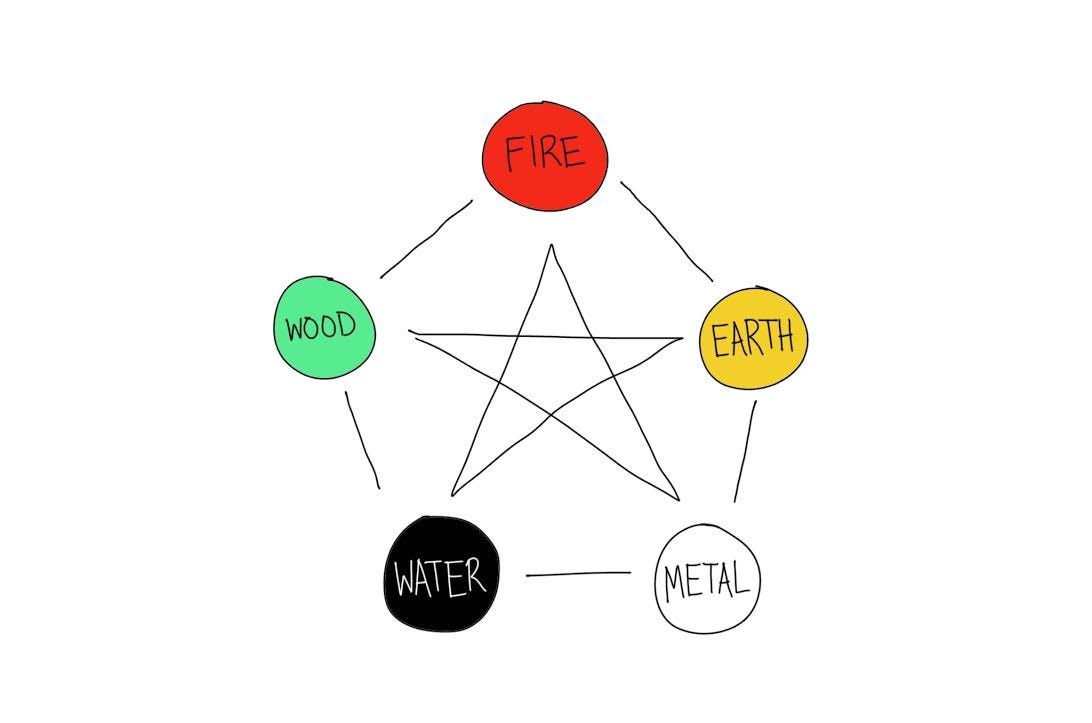

The west is mountainous with high terrain and cold climate, similar to the properties of metal. The south is hot and similar to fire in properties. In this case the east is similar to wood in properties, so it pertains to wood.

For example, the sun rises in the east according to the geographical location of China. If it is similar to the properties of one element, then it pertains to the category of that element. The first step is to compare the image, properties and functions of things with the abstracted properties of the five elements respectively. In the light of the basic properties of the five elements, analogy and induction can be used to categorize things in order to decide the properties of different things. Moistening, moving downwards, cooling, storing Growing, supporting, transporting, receiving Properties and extended meaning of five elements Five elements
FIVE ELEMENTS OF THE YIN AND YANG THEORY FREE
For example, the properties of flexing and extending, growth and development as well as free activity all pertain to the category of wood warmth, heat, ascending and brightness all pertain to the category of fire reception, cultivation and transformation all pertain to the category of earth change, depuration and astringency all pertain to the category of metal and moistening, downward movement, cold and coolness as well as closure and storage all pertain to the category of water. In order to explain the properties of more things, people abstracted the properties of the five elements for extensive application and extended their implications. Since wood, fire, earth, metal and water are five categories of the main objects in the natural world and possess specific properties and depend on each other to exist, people in ancient China divided and explained the properties of things according to the characteristics of the five elements.Īs to the characteristics of the five elements, the early understanding concentrated on the primary properties of wood, fire, earth, metal and water in the natural world, such as "water moistens and flows downward", "fire flames up", "wood can be flexed and extended", "metal can be changed in form" and "earth can grow crops", etc.

Categorization of things according to the properties of the five elements So they all bear the basic properties of these five elements and maintain a harmonious balance through the activities of constant inter-promotion and inter-restraint. The theory of the five elements holds that all things in the natural world are derived from wood, fire, earth, metal and water.

So "wuxing"(the five elements) actually refers to the movement and transformation of these five elements including their interrelationships. In Chinese, "wu" refers to five, here means wood, fire, earth, metal and water "xing" means movement and transformation. Such a cognition and understanding eventually formed the theory of the five elements. Besides, these elements are interrelated and influence each other. For example, people drink water and use fire to cook food metal and wood can be made into various tools earth ensures the growth of all things. People in ancient China believed that wood, fire, earth, metal and water are indispensable in daily life and are keys to the variations in the natural world. Later on, the theory of the five elements was applied to TCM and became one of the important components in theoretical system of TCM. The theory of the five elements, together with the theory of yin and yang, painted a splendid picture in ancient China. It is the cognition of the material world by people in ancient China and was used to explain and analyze things in the natural world. The theory of the five elements, along with the theory of yin and yang, originated from ancient China.


 0 kommentar(er)
0 kommentar(er)
